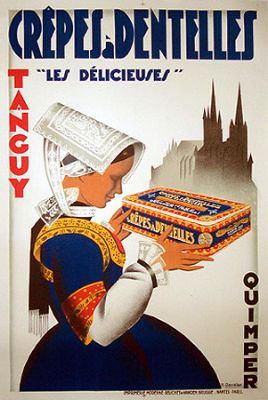2004 December
About Andrew Cusack
 Writer, web designer, etc.; born in New York; educated in Argentina, Scotland, and South Africa; now based in London.
Writer, web designer, etc.; born in New York; educated in Argentina, Scotland, and South Africa; now based in London. read more
News
Blogs
Reviews & Periodicals
Arts & Design
World
France
Mitteleuropa
Knickerbockers
Argentina
The Levant
Africa
Cape of Good Hope
Netherlands
Scandinavia
Québec
India
Muscovy
Germany
Academica
Wallabout Market

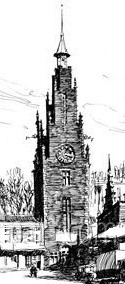 New York’s Wallabout Market was once the second-largest market in the world. From about 1884 onwards, vendors would gather in this district adjacent to Wallabout Bay in Brooklyn and sell their various wares. It was then that the market vendors had been banned from Fulton Street for making too much noise, and so took up their trades further down by the Wallabout Canal, next to the New York Naval Shipyard, more commonly known as the Brooklyn Navy Yard (founded 1801, decommissioned 1966).
New York’s Wallabout Market was once the second-largest market in the world. From about 1884 onwards, vendors would gather in this district adjacent to Wallabout Bay in Brooklyn and sell their various wares. It was then that the market vendors had been banned from Fulton Street for making too much noise, and so took up their trades further down by the Wallabout Canal, next to the New York Naval Shipyard, more commonly known as the Brooklyn Navy Yard (founded 1801, decommissioned 1966).
The market featured permanent two-story brick structures designed in a nostalgic Dutch style, commemorating the Netherlandish origins of New York and Brooklyn, centered around an open plaza known as Farmers’ Square where stalls were erected. The centerpiece was a tall clock tower, seen at right and further below.
The market buzzed with activity from about midnight until just after dawn, by which time trading had died down. During the majority of the daylight hours the vast market stood empty. (more…)
St. Paul’s, Eastchester
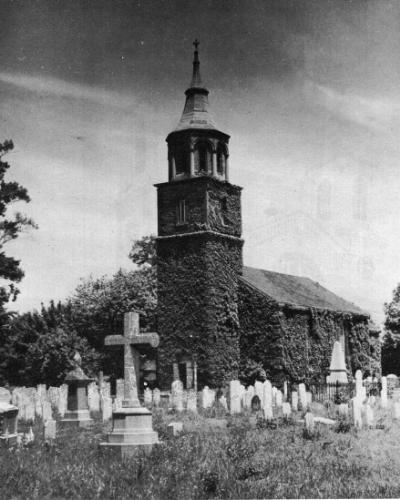
One of the hidden gems of our county is St. Paul’s Church, Eastchester. The church has been within the City of Mt. Vernon since the late 19th century, but was the original town church for Eastchester, situated on the village green. The first church building on the site, a simple wooden structure, was built in 1692. The current structure was built in 1763, with numerous additions and subtractions since that date. (more…)
Christmas Eve 1886
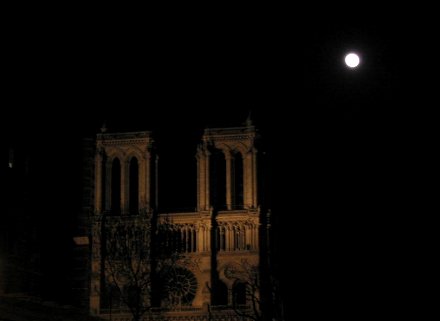
It was on this evening in 1886 that two souls experienced a profound conversion. Thérèse Martin, or Thérèse of Lisieux as she is now known, wrote of it in her spiritual biography, recounting: “On that luminous night, Our Lord accomplished in an instant the work I had not been able to do during years.”
At the same time, almost the same hour, a young man in his twenties, Paul Claudel stood in the Cathedral of Notre-Dame de Paris and began his return to the church. He was later to become a diplomat, poet, writer, and exegist.
Well I could go on further about both, but Philip Zaleski describes the conversion of Thérèse in his recent article ‘The Love of Saint Thérèse’ in First Things whereas Paul Claudel’s conversion is described by Eric Ormsby on the first page of the Arts section in today’s New York Sun. So do some research yourself. There’s a vast kingdom out there waiting to be learnt.
A very happy and blessed Christmas to you all!
Christmas at Schloss Cusack
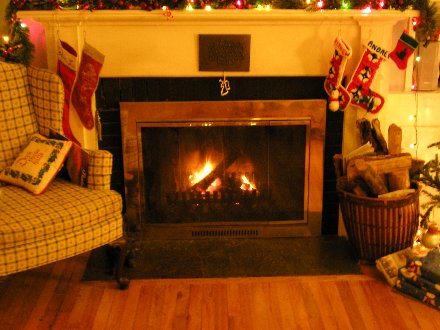
Ah, the fire burns, the tree is lit, and another Christmas is had amongst the fam.

Photos taken with my brand new digital camera. It replaces the one which was lost amidst the chaos of the 2003 Kate Kennedy Club May Charity Ball. Drowned in vodka.
More Saintliness
The brouhaha over our university’s ironically-titled tabloid, the Saint, has made it to the respectable papers.
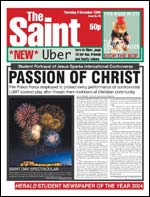 The Scotsman‘s Education Correspondent, Kevin Schofield, writes today under the headline of “University challenge to freedom of speech – and Welsh jokes“. Slightly misleading since in this instance the challenge is from the Students Union not the University administration, but it was given a mention on the front page of Scotland’s national newspaper. The Scotsman also published an opinion piece entitled “New puritanism we last witnessed in ’20s Germany” which seems slightly hyperbolic.
The Scotsman‘s Education Correspondent, Kevin Schofield, writes today under the headline of “University challenge to freedom of speech – and Welsh jokes“. Slightly misleading since in this instance the challenge is from the Students Union not the University administration, but it was given a mention on the front page of Scotland’s national newspaper. The Scotsman also published an opinion piece entitled “New puritanism we last witnessed in ’20s Germany” which seems slightly hyperbolic.
Andrew Murray-Watson reports in the Telegraph of “Student newspaper at St Andrews University closed after ‘making racist attack on the Welsh’“. The most amusing bit from this article is a quote from Saint editor Jo Kerr:
The terms “broadsheet quality” and “sophisticated manner” appearing in an article about the Saint are hilarious! This from a newspaper which feels free to lecture about Christians and Christianity while displaying a wholesale ignorance of the Faith (e.g. referring to St. Patrick as a “biblical superhero” and ridiculous statements about the Christian Union).
Winter in Westchester
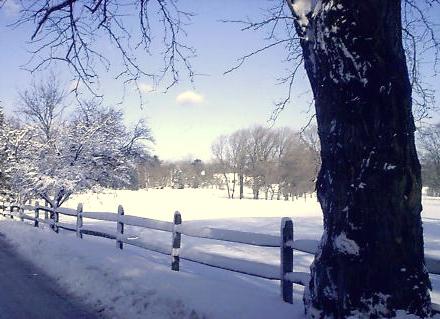
Last night we received the first bout of snowfall since my return home, which means I’m currently in that wonderful period of grace when snow is charming and beautiful. Doubtless it will be but a few days I will be sick of it and yearn for better driving conditions. But for now, it is welcomed and enjoyed. I think tonight I will sit and read by the fire.
Fourth Sunday in Advent
Well today was rather heartening. I went to the midday mass at St. Joseph’s (the local church) and Msgr. Doyle (the pastor) addressed the congregation before mass, donning a cassock, something I’d never seen him do before. He then told us all that our beautiful tabernacle was being moved back to the centre of the sanctuary, where it would be joined by the fronting of the 1927 altar which had be found and restored, and that the priest’s chair would move to the side. All this would be finished before Christmas, too! I had often considered writing a letter suggesting this very thing, but never got around to it.
Monsignor also pointed out that there were four pages of guidelines for church regarding dress, behavior, reception of Communion, and various other important things that have oft been ignored in the past forty years. (See pages 5-8 of this pdf file – very good stuff).
Gosh, St. Joe’s is becoming more like St. Agnes. What a Christmas present! Now we just need them to give us some Latin.
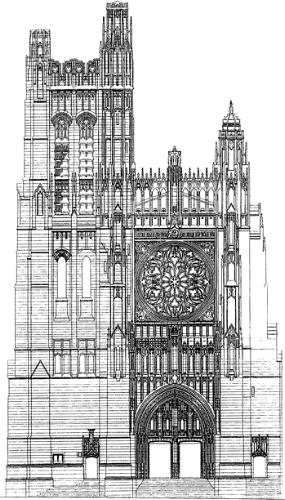
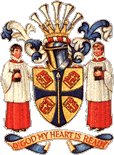 Later, Adam Brenner and I went off to the Festival of Nine Lessons and Carols with the Rev. Andrew C. Mead, OBE at St. Thomas Church (Episcopal) on Fifth Avenue. Caroline Gill dropped out to take a look at a house. Anyways, I’m a big fan of Lessons and Carols, so that was much enjoyed. St. Thomas really do have a superb choir. They also have the reredos to end all reredoses – a massive stone affair that takes up most of the west (liturgical east) end of the Church. Beautiful church, but I still prefer St. Vincent Ferrer (which in addition to being beautiful is a proper church with valid sacraments).
Later, Adam Brenner and I went off to the Festival of Nine Lessons and Carols with the Rev. Andrew C. Mead, OBE at St. Thomas Church (Episcopal) on Fifth Avenue. Caroline Gill dropped out to take a look at a house. Anyways, I’m a big fan of Lessons and Carols, so that was much enjoyed. St. Thomas really do have a superb choir. They also have the reredos to end all reredoses – a massive stone affair that takes up most of the west (liturgical east) end of the Church. Beautiful church, but I still prefer St. Vincent Ferrer (which in addition to being beautiful is a proper church with valid sacraments).
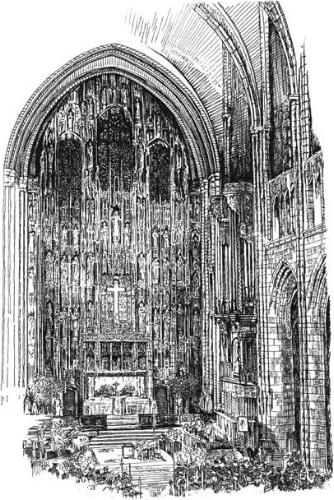
L’Église de St. Jean Baptiste, New York
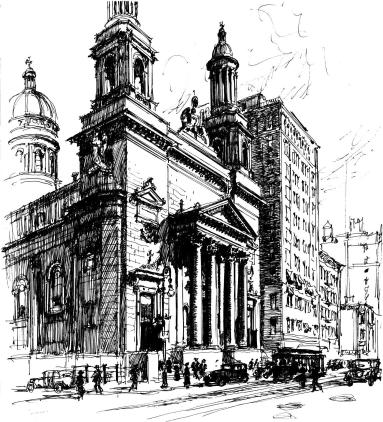
A comment of Mr. Hiss on Fr. Sibley’s blog mentioned the Church of St. Jean Baptiste on the Upper East Side. There are few churches in New York, let alone all America, which are as beautiful as St. Jean Baptiste (or “St. JB’s” as people ridiculously call it). A restoration only a few years ago brought the church back to its full splendour.
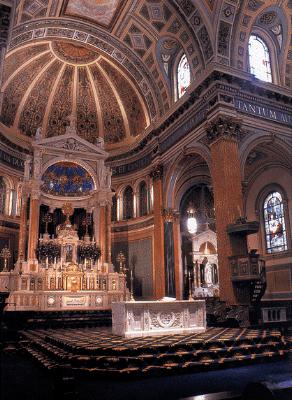
It used to be the national parish of the French Canadians in New York, hence the French name, and is now home to the National Shrine of St. Anne, formerly further downtown in what became St. Anne’s Armenian Catholic Cathedral (one of a few beautiful and very active church buildings being pawned off by the wretched bureaucrats who run the Archdiocese of New York).
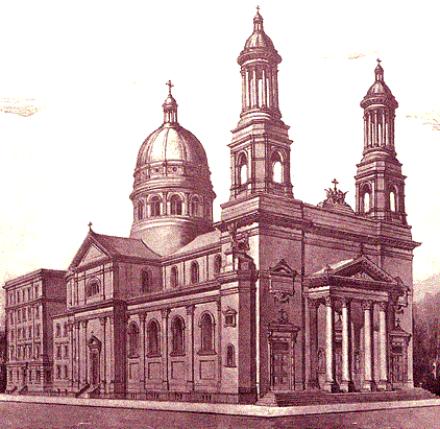
The church is open most of the day and definitely worth stepping into even if you only have a few minutes. Their parish website (link above) has a somewhat detailed history of the parish and the architecture of the church.
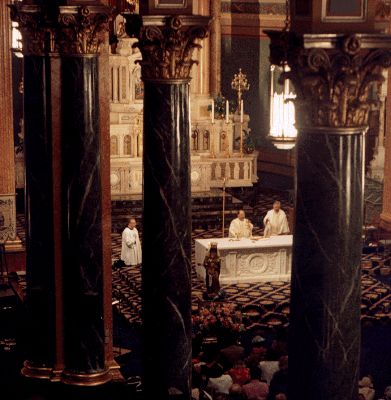
The parish and girls’ high school are now staffed by priests of the Congregation of the Blessed Sacrament as well as sisters from the Congrégation de Notre-Dame, and the Body of Christ is adored all day long except during Mass.
If London Were Like New York
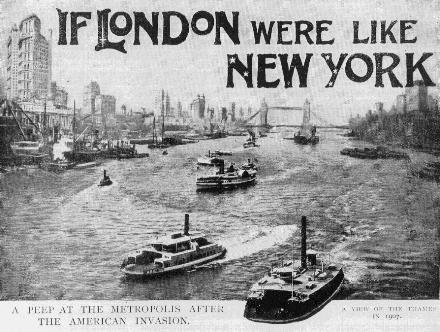
I stumbled upon this rather drole piece from 1902 about the prophesized New-Yorkification of London in Harmsworth’s Magazine. “If London Were Like New York: A Peak At The Metropolis After The American Invasion” is accompanied by some amusing illustrations of the anonymous authors vision of the future.
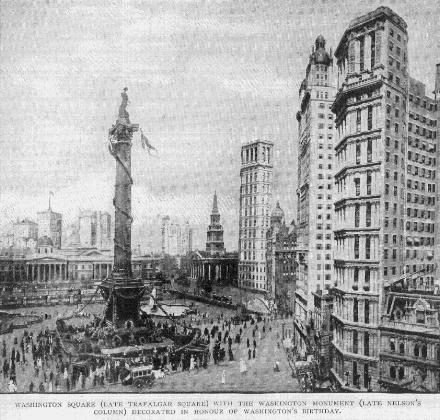
Trafalgar Square is rededicated to George Washington, and decorated to celebrate his birthday.
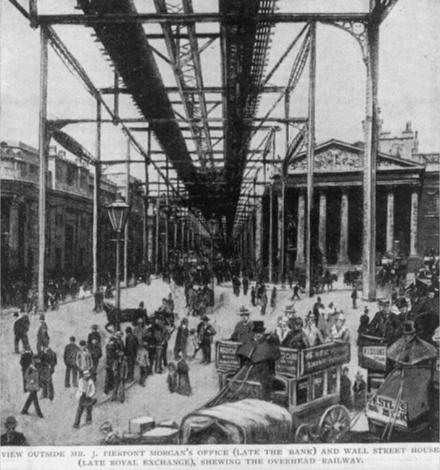
An el is built right through the heart of the City.
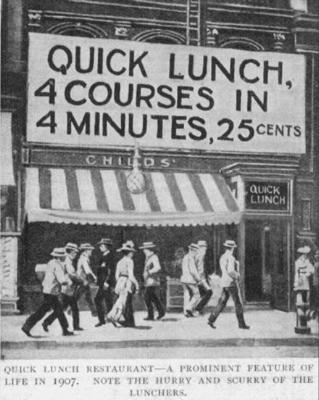
There’s even a precursor of our famous American fast food. Perhaps the most prophetic of the author’s predictions!
Les Halles Will Get a Makeover
For the architectaphiles in the audience, the designs for the complete do-over of les Halles (one of Paris’s urban eyesores) are out.
Le Figaro‘s take on it.
Images of the accepted design and rejected proposals from le Figaro.
The New York Times writes on it as well. (Registration might be required).
Reading Roundup
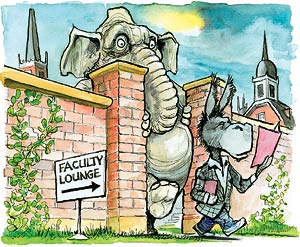
Lexington, the column in the Economist, writes about the lack of diversity in American higher education in a piece entitled “America’s one-party state”.
The Telegraph notes that more and more Dutch people are leaving their native land, with emigration surpassing immigration in the Netherlands. (Registration might be required to view article).
John Lukacs depicts the rise and fall of the ‘liberal’ in America in “The Triumph and Collapse of Liberalism” printed in the Chronicle of Higher Education.
The Saint ‘Banned’
The Saint, paragon of social liberalism and this university’s other newspaper, has ironically been banned from using the Student Union’s facilities (in which their offices are located) for making offensive comments about “LGBT students, dyslexics and the Welsh.” How amusing to see infighting amongst the useless institutions of the University!
Oddly enough, despite frequent cause for complaint, there is no mention of numerous offensive comments and innacuracies about Christians. This is probably because most Christians are so used to assaults from the press we don’t bother complaining.
Well, you all read the Mitre anyhow.
Students Association President Simon Atkins’ letter.
Samizdata reports the ban.
The Oldest Library in New York
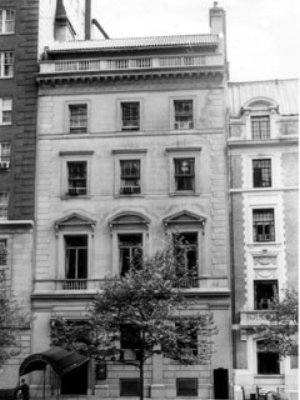
When one thinks New York and thinks libraries, the obvious place which comes to mind is the New York Public Library, one of the largest libraries in the world with one of the most beautiful homes in Bryant Park on 42nd St. 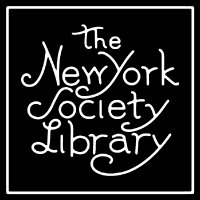 The Public Library was formed in the mid-19th century by a merger of the private Astor, Lennox, and Linden libraries. The great metropolis, however, is home to a much older bibliotheca called the New York Society Library, founded in 1754.
The Public Library was formed in the mid-19th century by a merger of the private Astor, Lennox, and Linden libraries. The great metropolis, however, is home to a much older bibliotheca called the New York Society Library, founded in 1754.
In that year, six ‘civic-minded individuals’ formed the New York Society with the aim of founding a library which would be “very useful as well as ornamental to the city”. The ‘city library’ was given a room in the old City Hall (later, as Federal Hall, home to the United States Congress), and received a charter from H.M. King George III in 1772. Unfortunately the Library was looted during the Revolution, but survived and was restocked afterwards, receiving a second charter from the Assembly of the State of New York.
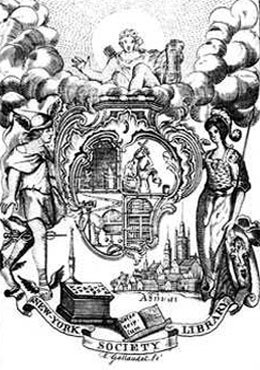
The Society Library is still, as it was then, a subscription library which operates almost like a private club, though open to all who will subscribe (and the Society Library’s membership fee is much more economical than a club). The N.Y.S.L. merged with the New York Athenaeum in 1840, and having been located a various locations around lower and mid Manhattan, in July 1937 moved its collection of one hundred and fifty thousand volumes into 53 East 79th Street (seen at top), where it continues today.
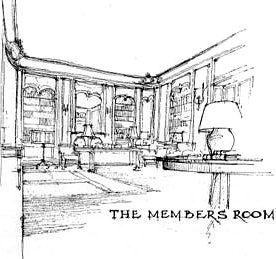
I’ve never been to the Library myself, though it seems a suitably comfortable and private location to read or research, and not expensive to boot. Perhaps I will strike up a subscription when I am next in New York as a full-time resident. They even have a Children’s Room which would be useful when progeny appear.
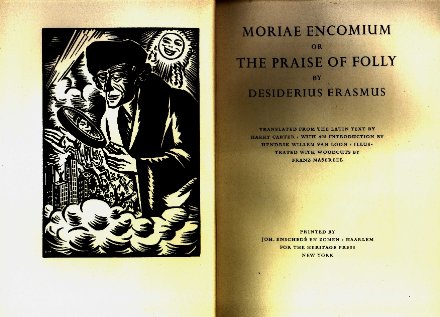
Last Days in Andreanopolis
How splendid it will be to return home for Christmas! However, I still have a few days here in St Andrews and a few tasks to get done as well. Breakfast with Nicholas Vincent (Architecture writer for the Mitre) tommorrow. A pint with Chris Pollard sometime in there. Lunch with Tom Leppard, St Andrews’ favourite champagne socialist, Thursday. I told Alex Matzdorf and Ed Jackson both I’d have coffee with them sometime, and hopefully I will in the next three days.
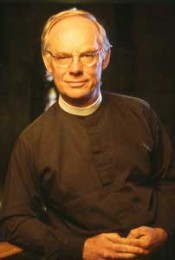 Today was my last academic bit, a celebratory affair marking the final seminar for the ‘Monarchy, Church, and State’ course with Dr. Bradley (seen at right, Kirkin’ it up). It was somewhat embarassing as I was about fifteen minutes late since I stopped to buy sherry for the seminar. There is something moderately amusing about walking into of the rooms in St. Mary’s quad with a bottle of sherry and getting a round of applause. In addition to my sherry, there were other beverages including non-alcoholic mulled wine (NON-ALCOHOLIC MULLED WINE! That’s right, there were Protestants afoot).
Today was my last academic bit, a celebratory affair marking the final seminar for the ‘Monarchy, Church, and State’ course with Dr. Bradley (seen at right, Kirkin’ it up). It was somewhat embarassing as I was about fifteen minutes late since I stopped to buy sherry for the seminar. There is something moderately amusing about walking into of the rooms in St. Mary’s quad with a bottle of sherry and getting a round of applause. In addition to my sherry, there were other beverages including non-alcoholic mulled wine (NON-ALCOHOLIC MULLED WINE! That’s right, there were Protestants afoot).
We were supposed to be covering what will be on the exam, but that pretty much came down to “There will be nine questions to choose from and you’ve had nine seminars. Study them all.” It may be very well for me, but others have dissertations to write, poor souls! Nonetheless, Dr. Bradley insisted the latest Mitre be passed around as he found our editorial rather intriguing. Of course the triumvirate of young Baptist ladies in the corner went straight for Za-Za Shelly’s article on bras. (Have to have something in the Mitre for the fair ones to read). Graham Booth volunteered himself as sports writer.
Already have my first appointment for home. Festival of Nine Lessons and Carols at St Thomas on Sunday. Brenner and I will be going, providing I have any energy left after flying home the previous evening, and hopefully we’ll be able to track down James Feddeck – the man himself – to come along. Ah, but I’m not really home until I hear the euphonic incantation of Asperges me at the 11 o’clock Mass at St Agnes.
Back in Bronxville
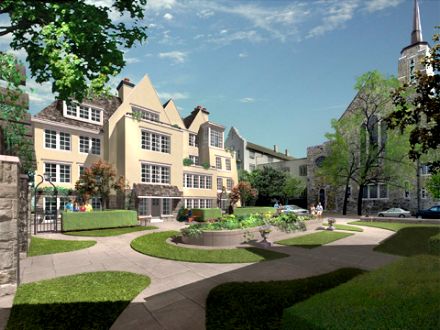
Robert A.M. Stern has apparently designed a proposal for the site of the old Gramatan garage in Bronxville, behind Christ Church. I have to admit that once the garage was torn down I began imagining the possibilities for the site. Christ Church, by Grosvenor Goodhue the Great (responsible for St. Vincent Ferrer and the Cadet Chapel at West Point among others), is such a beautiful building, and Stern’s design deftly fits into the context.
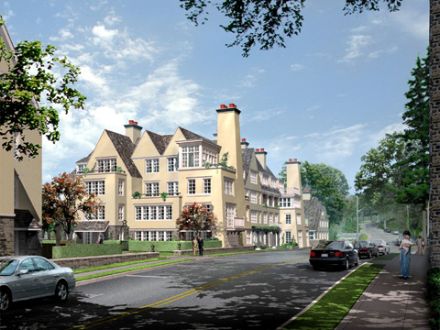
The design is along the lines of the nearby Kensington Gardens and the other courts of townhouses which are dotted around that area and elsewhere in Bronxville. It seems to be an apartment building, probably along the lines of the Avalon building (previously home to Emma, Lilly, and Momma Kate Haberl, and Roger Mahon too), though of a much better design.
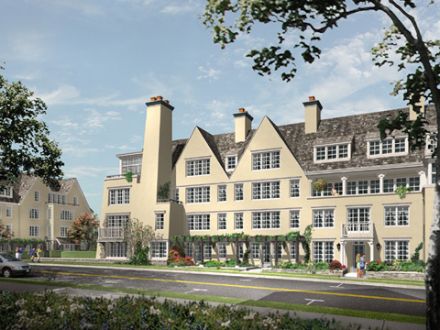
It is, however, a slightly odd mix of buildings that one finds surrounding Christ Church. Immediately to the north are the modern church house and a Spanish Mediterranean building, across Sagamore Road are brick neo-Tudor buildings, and up the road are mock English village structures of the ilk this design emulates. Still, altogether it somehow works, though Christ Church is oddly enough an arts-and-crafts reinterpretation of English Gothic with a Spanish-style courtyard featuring a statue of St. Francis of Assisi. Bizarre, but it all works somehow.
42nd Street Trolley?
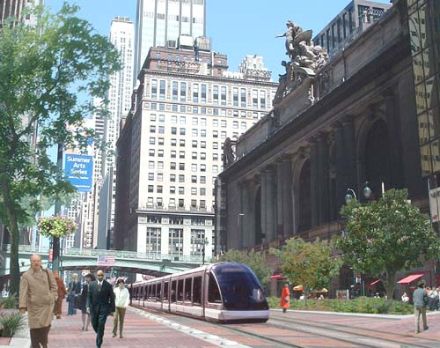
Two groups are supporting plans to put a trolley line down 42nd St from river to river. Vision42‘s proposal (seen above) would see the thoroughfare pedestrianised and arborised, whereas that of the Municipal Arts Society (below) would retain automobile access.
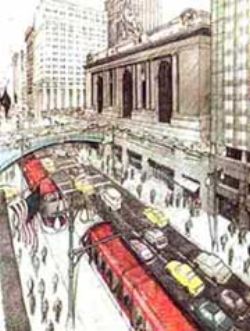
I have to say I rather like the idea of turning 42nd Street into a tree-lined pedestrian boulevard, despite doubts as to it actually happening. Though, as an avid guy-who-drives-in-Manhattan-alot I think losing a major cross street would be a hassle. New York lacks a major pedestrian area. We have small ones like Stone Street/Beaver Street area way downtown and the South Street Seaport, as well as gorgeous piazzas like Audubon Terrace (a hidden treasure which surely must be the subject of a future post). But we’re lacking a large, long, people-oriented boulevard. Adding trees would be especially wonderful as well.

Either way, it’d be nice to see ‘light rail’ (as trolleys are called these days) return to the streets of Manhattan. Whether it would be wise or prudent I’ll leave for others to decide, but the Chestertonian nostalgic in me welcomes their return.
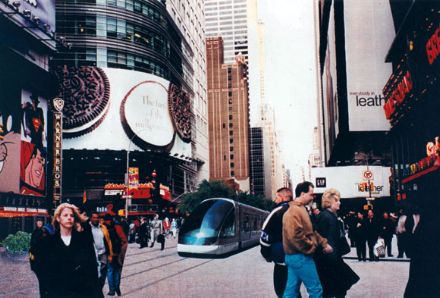
Having some genuine space around Times Square just for people would be a definite benefit as well. It’s always terribly crowded with people and often vehicles as well. Removing 42nd as a vehicular cross street at Times Square would probably make it more effecient actually.
Of course the plans have the new trolley line turning at the Hudson river, heading south to link up with the redevelopment of Hell’s Kitchen discussed in posts past.
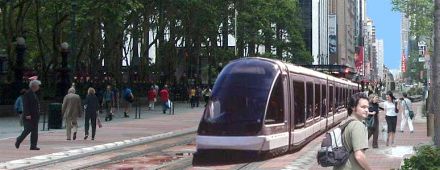
The Feast of St Nicholas

Today is the Feast of Saint Nicholas, one of my favorite saints. I’m not quite sure why he’s one of my favorites, but it probably has something to do with being the Patron Saint of New York, the greatest land there ever was. Unfortunately, he’s a somewhat neglected saint, perhaps even abused and overwritten as “Santa Claus”, the secular, materialist idol of the marketplace which has usurped both Nicholas’s heritage and subsequent reinvation a la Washington Irving et Thomas Nast.
There are many fine legends of the good Saint, most of which you can find at the most excellent resource which I highly recommend known as the St Nicholas Center.
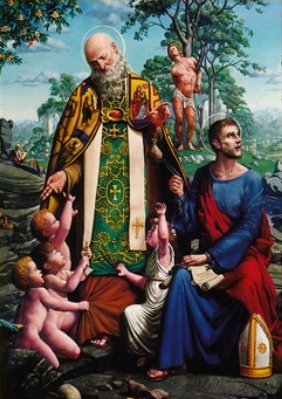
St. Nicholas was once fairly represented in the great metropolis which he watches over. Above he is seen in the sanctuary mural behind the altar at the Church of Saint Agnes – the best parish in all Manhattan. The mural was actually painted by Sean Delonas, a cartoonist for the New York Post. One of the cherubs pulling at St Nicholas is the son of the muralist.
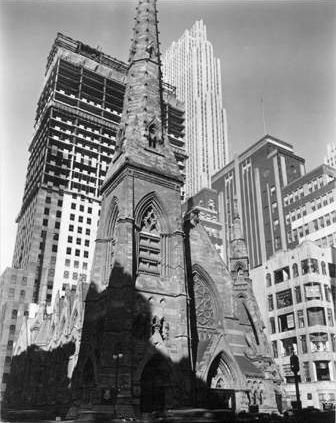
Behold, the church that was once called New York’s ‘Protestant Cathedral’. It’s hard to believe it’s gone, though I was born after it was demolished to make way for the Sinclair Oil Building. The Collegiate Church of St Nicholas was the oldest congregation in the City, founded in 1628 and housed in this late-nineteenth century building on Fifth Avenue. This photograph by Abbott shows Rockefeller Center rising in the background.
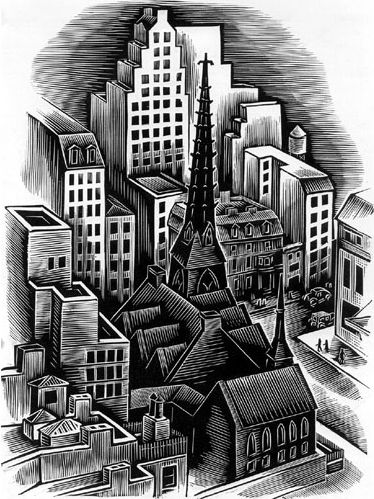
Surprisingly, the congregation – of which some of the most wealthy knickerbockers were members – did not build a new church, instead worshipping at a variety of different locations. I believe it is now dissolved, though perhaps it merged into the West End Collegiate Church.
A Good Point
John Lukacs, in his A Student’s Guide to the Study of History, says in a footnote:
This is my essential point about architecture today. If one looks at the actual built quality of buildings by Duncan Stroik or Thomas Gordon Smith, one may appreciate the overall idea or effort but frown upon the execution, call it clumsy or whatnot. The point is that though these people may or may not be masters themselves, they are raising a new generation of architects who are in tune with the past and thus able to more readily plot a future of beauty and mastery. With any luck, within 50-100 years, architecture will have recovered from the uninspiring malaise in which it currently dwells.
Search
Instagram: @andcusack
Click here for my Instagram photos.Most Recent Posts
- Silver Jubilee November 21, 2024
- Articles of Note: 11 November 2024 November 11, 2024
- Why do you read? November 5, 2024
- India November 4, 2024
- The Lithe Efficiency of the Old Constitution November 4, 2024
Most Recent Comments
Book Wishlist
Monthly Archives
Categories

